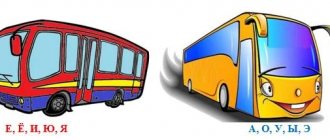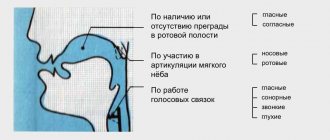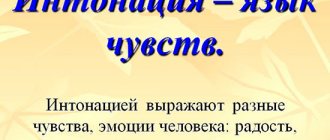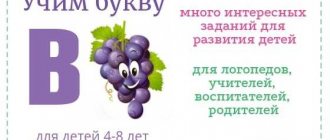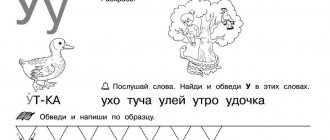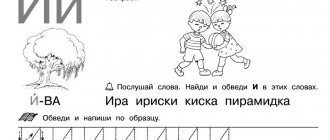Nowadays, many people show interest in their past, including the history of their family. Interest in this topic did not arise by chance: the idea of oneself as a person has changed. If earlier a person was part of a system, today he is, first of all, an individual. Therefore, the question of where I and my ancestors are from is very relevant.
You can, oddly enough, slightly lift the veil of secrecy by studying the rules of the Russian language and the letter “C”. Why, for example, is it written “Yeltsin”, but “Solzhenitsyn”, if, according to the rule, “I” follows “C”, with the exception of a few words. It’s simple: this law does not apply to the writing of surnames, since they were entered into the passport in accordance with the pronunciation that existed in the territory of the person’s residence. In Ukraine it was considered correct to write “TSI”, and in Russia - “CI”. From which it becomes clear where, whose ancestors are.
Sound and noise
The number of consonant letters in the Russian language is 21. One part of them is pronounced with the participation of voice and noise, and the other - only with the participation of noise. Accordingly, the first part refers to voiced consonants, and the second, accordingly, to voiceless consonants.
The next characteristic by which consonant letters are divided is hardness and softness, which depend on the vowel letter following the consonant in the syllable.
- If you try to shout out the letters: k, p, s, t, f, x, c, w, then you will have difficulties, since their articulation does not involve the participation of the voice: all these letters are voiceless. Elementary school teachers suggest memorizing the sentence: “Styopka, do you want some bacon? Fi!”, which contains the entire set of voiceless consonants. But they are wonderfully pronounced in a whisper.
- But you can easily shout out the letters: b, c, d, d, g, z, j, l, m, n, r, since their pronunciation involves sound vibrations formed by ligaments and changed through articulation. These are voiced consonants. But if you try to whisper them, you won’t succeed.
In colloquial speech, voiced and voiceless consonants can be pronounced almost identically: live - sew; goal - count; day is a shadow, but their meanings do not coincide.
Examples of tasks for children
Tasks for training the differences between paired consonants can be compiled for each pair according to the following principle (using the example of the D/T pair):
Tasks for distinguishing a pair of consonants G/K
Pairs and "non-pairs"
It is necessary to find out whether the unvoiced letter “c” can be hard or soft. We have a group of unpaired letters. These are th, x, l, ts, m, ch, n, shch, r, some of which correspond to soft pairs, and some are only such consonant letters.
These are consonants called sonors in Russian: [й'], [л], [л'], [м], [м'], [н], [н'], [р], [р']. The upper palate takes part in their pronunciation.
There is no letter “c” among them.
The remaining part consists of letters whose pronunciation is associated with hissing: [x], [x'], [ts], [ch'], [sch']. Of these, one letter is paired according to the softness-hardness principle, two letters can only be soft - “ch” and “sch”, and the fourth letter does not have a pair according to softness, and is accordingly hard.
The question of whether the letter “ts” is soft or hard has been resolved: the hissing letter “ts” in Russian can only be hard.
Pronunciation problems
Due to the complexity of the structure of the sound “C”, children often have difficulties with reproduction. They are usually divided into the following types:
-
The phoneme is pronounced with an incorrect position of the tongue. The organ is protruded between the front and upper incisors. The sound turns out to be lisping.
Interdental. - Prizubny
. The tip of the tongue focuses on the central incisors. The organ rests equally on the upper and lower teeth. This position forms a bow. An air stream passes through it as you exhale. Receives a hard or soft “T” (princess - Tarevna or Tyarevna). - Labial-dental. The organs of the articulatory apparatus take a position characteristic of the phoneme “C”. The lower lip is raised. A small gap forms between the incisors. An air stream comes out through it. It turns out that “C” is replaced by “S” or “F” (king - Sar or Far).
- Hissing. The tongue is pulled back. The speech organ lies at the bottom of the oral cavity. It tenses up when pronouncing. Its back reaches towards the sky. The air stream comes out through the gap between the back and the sky. A sound similar to a soft “Sh” is formed (chain - Shep).
- Whistling. The sound "C" is replaced by "S". The organs of speech are in the appropriate position. The tip of the tongue rests on the lower incisors. There is a notch on the back of the organ. An air stream passes through it, forming the sound of the phoneme “C”.
- Side. The tip of the speech organ touches the alveoli (the area behind the upper incisors). In this case, the tongue itself can be tilted in any direction. The air stream comes out in accordance with the position of the organ. Also, with lateral pronunciation, air can escape equally from both sides, as with the sound “L”.
- Nasal.
The defect occurs due to improper breathing. When you exhale, air passes through the nasal passages. The tongue tenses. The tip is pulled back. The organ is located at the bottom of the oral cavity. “X” sounds with a nasal tint (heron-XNaplya).
Important!
to independently determine what defect a baby has. Therefore, it is recommended to seek help from a specialist. To choose the right correction technique. In speech therapy, a whole file of tasks , each of which takes into account the age indicators and abilities of the child.
The letter "C" and its pronunciation
So, the letter “C” does not form a pair, therefore, it refers to unpaired, voiceless consonant letters. If we look at the pronunciation of the letter “ts”, it turns out that it consists of two sounds: [t] and [s], which in total sounds like [ts]. In Russian, “ts” exists only in a hard form.
There are some minor differences in the pronunciation of words starting with the letter “c” in cases of its combination with the vowels [a], [o], [u] behind it, and with the vowels [e], [i]. In the syllables tsa, tso, tsu the letter “ts” sounds hard, and in the syllables tse, qi it sounds somewhat softer. The same applies to words in which these syllables are in the middle.
In some words that came to us from other languages, there is a double letter “c”, but this word is pronounced as if it only has one “c”. However, in such cases, the emphasis is placed on the sound [t] that makes up the letter “ts”. Let’s take the word that came to us from Italy, “pizzicato”: it should be pronounced not [pi,ts,tsicato], but [pi,t.sicato].
The pronunciation of words with a combination of the letters “t” and “c” (saints) follows the same principle.
Exercises
Before learning how to correctly pronounce the sound “C,” breathing is taught in speech therapy classes. Gymnastics is especially necessary for nasal defects.
Breathing warm-up – game activity “Butterfly”.
Items: paper butterflies 2-3 pcs. They can be cut out of paper or bought ready-made. We attach a string to each and hang it in front of the baby’s face.
Actions: invite your child to blow on the butterflies as hard as possible. They should fly apart in different directions. Make sure your inhalations are slow and your exhalations explosive and intermittent. Before classes, you can recite poems, sayings, and sing songs:
Fly, fly butterfly
High to the sky
There are your children -
On an aspen branch.
Repeat the game 2-5 times. Make sure your child doesn't get bored. For the older group of kids, classes are chosen that are more difficult. For example, blow a piece of cotton wool or a piece of napkin from the tip of your nose. Using your breath, try to keep the object from touching the ground for as long as possible.
Articulation exercises
Experts use such classes in preparatory groups. Initially, children need to train their speech apparatus.
Don't miss: The simplest and most effective ways to make the sound R and Rb
Gymnastics for lips:
- We stretch our lips into a smile. They are in tension.
- We close our teeth.
- The bite is natural.
- We do not push the front and upper incisors forward.
- Hold the position for 10-15 seconds. Repeat the warm-up up to 5 times in front of the mirror.
Gymnastics for the tongue:
- Knead the dough (develops the ability to hold your tongue correctly). We smile and open our mouth as wide as possible. We place the speech organ on the lower lip. We start saying la-la-la-la while we slap our lips on the calm tongue. The air stream should come out gradually. To control the breathing process, use a piece of cotton wool. Bring it to your baby's mouth. The task is completed correctly if the cotton wool deviates slightly. The duration of the lesson is 15-20 seconds, 2-3 approaches.
(muscle strengthening). We open our mouth. The lips are smiling. The wide tongue stretches upward. We try to reach the tip of the nose. Then we lower the speech organ down. We reach to the chin. Then we reach for the upper lip with our tongue. Then we reach the bottom. We also do it in turns with the teeth. Then we hide our tongue inside and touch the alveoli at the top and bottom. We rest for 15 seconds. It is important to ensure that the speech organ remains wide during gymnastics.
Swing- Coil (practicing the skill of raising the sides of the tongue). Open the oral cavity. Keep your lips smiling. We place the tip of the organ on the front central incisors. The sides touch the upper molars. We roll the body of the tongue forward and then back into the oral cavity. It is important that the tip of the organ is wide and does not protrude beyond the teeth. The articulatory apparatus is motionless. We perform 2-3 times with a break of 20 seconds.
It is important to move on to a new
level of training after mastering the previous one. The child must complete tasks clearly and quickly.
In Slavic languages
Unlike the Russian language, where the letter “ts” is always hard, the issue of the pairing of the letter “ts” in other Slavic languages, including Bulgarian, Belarusian or Ukrainian, is resolved differently. Here the letter “c” can be in both the “soft” and “hard” versions. The soft pronunciation of the "ts" in the words "pepper" or "bird" sounds like "pepper" and "bird". Surnames of Ukrainian origin can be easily identified by the same feature: they contain a soft letter “ts”, consisting of the sounds [ts,] (Katsyuba).
The combination of two soft sounds [t,s,] is increasingly transformed into one sound [t,]. This was especially evident in the Belarusian and Polish languages, where the letter “c” is pronounced as [t,].
Hard consonants
The question of whether the letter “ts” is soft or hard in the Russian language has been resolved unambiguously: the letters “zh”, “sh” and “ts” can only be hard.
The influence of the vowels adjacent to them does not matter: bird [ptitsa], king [tsar,], goal [tsel,]. In words starting with the letter “c”, the sound [ts] remains hard even when combined with vowels, which are “softeners” for consonants that have a “soft” pair: i, e, e, yu, i.
In relation to the letter “i”, which makes up a syllable with the letter “ts”, which is part of the root of the word, there is a rule that states that, despite the fact that in this case the sound [s] is heard instead of “i”, such a syllable is written as "qi": bacillus, shareholder, hyacinth, circus.
However, there are exceptions to this rule, which will be discussed below.
Guess
We write signs with transcriptions of words. The child’s task is to name the word and name soft sounds. It is best to make the signs bright and large, then it will be more interesting for children to react to them.
To start the game, select easy words: [m`el]; [soap]; [l`uk]; [WHO]. And at the end you can complicate the task and give the following words: [b`elka]; [ski track]; [kl`on].
While playing, the child visually remembers the designation of soft consonant sounds and gains practical skills in using knowledge when writing.
Combinations of vowels with “C”
The question of whether the letter “c” is soft or hard includes the rules for spelling it with the vowels a-ya, o-e, u-yu, e-e.
In words of Russian origin there are no combinations of the letter “ts” with the vowels i, e, yu, e. So, if we come across a syllable that includes “ts” and these vowels, then we can confidently say that we have a borrowed word: Caesar, Zurich, cephedrine, Qianling (Chinese).
Spelling of complex words is also possible with the inclusion of the syllables “tsya”, “tse”, “qiu”, “tse”, but in this case there is, as a rule, a syllable division: special∨electrode.
Special cases
To fully study the question: is the letter “c” soft or hard, you should turn to its spelling with the vowel “s”.
The syllable “tsy” is written in special cases, which include:
- words: gypsy, chicken, tsyts, mtsyri and similar roots related to them;
- possessive adjectives containing the suffix “yn” after the root ending in “ts”: Lisitsyn, Kuritsyn. This rule does not apply to surnames: Vitsyn, Stanitsyn, Yeltsin;
- adjectives ending in “th” following a stem ending in the letter “c”: chubby, pale-faced;
- nouns, after the stem ending with the letter “c” there is the ending “y”: months, peppers, saints;
- surnames of Ukrainian etymology: Tsybin, Tsybulko;
- proper names of foreign origin: Qin, Wang Ci;
- derivative forms of the imperfective verb “to stsat”: stsysh, stsyt.
With the exception of the above points, the vowel letter “i” is written in combination with the letter “ts”.
Every letter has a riddle
So, as it turns out, the letter “c” is not so simple.
By the way, it is present in all canonical alphabets of the Slavs, listed as “tse”. In church literature and in the Old Church Slavonic language it was called “tsi”, and sometimes “tsi”.
The modern version of the spelling of this letter goes back to the Cyrillic alphabet. But where and how it appeared there is no longer possible to find out. One thing is clear: similar outlines of the letter “c” can be seen among the ancient Arameans, Jews and Ethiopians.


